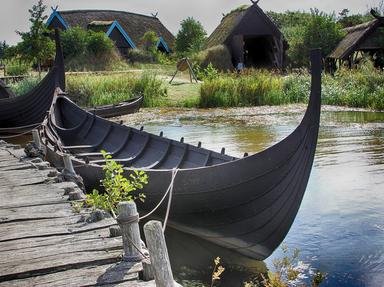Quiz Answer Key and Fun Facts
1. Founded the first Viking settlement in Greenland
2. First Duke of Normandy, great-great-great-grandfather of William the Conqueror
3. Fathered many famous sons, raided England, involved in the 845 AD Siege of Paris
4. Known as "the Great", was king of England, Denmark, Norway, and some of the Swedes
5. Known as "Bloodaxe", King of Norway and Northumbria
6. Founder of first European settlement in mainland North America
7. King of Sweden, possible first ruler of MunsŲ Dynasty
8. King of Norway, unsuccessfully claimed English throne in 1066
9. First Danish King of England
10. Nearly invincible in battle, his skills were described in "NjŠls Saga"
Source: Author
ponycargirl
This quiz was reviewed by FunTrivia editor
bloomsby before going online.
Any errors found in FunTrivia content are routinely corrected through our feedback system.

